| [1] 李林涛,吴海山,吴宇黎,等. 人工关节置换术围手术期的血液管理策略[J]. 中国修复重建外科杂志,2015,29(6):772-776.[2] 田华,王金波. 输血对关节置换老年患者认知能力的影响[J]. 解放军预防医学杂志, 2016,34(1):71-72.[3] 张克云,余黎明,张绪华,等. 高龄老人髋关节置换的高危因素:128例特征[J]. 中国组织工程研究,2014,18(9):1331-1336.[4] 谢锦伟,徐彬,康鹏德,等. 全髋关节置换术后使用自体血回输引流装置有效性及安全性的Meta分析[J]. 中华外科杂志, 2016, 54(2):108-113.[5] Lin SY, Chen CH, Fu YC, et al. The efficacy of combined use of intraarticular and intravenous tranexamic acid on reducing blood loss and transfusion rate in total knee arthroplasty. J Arthroplasty. 2015;30(5):776-780.[6] ZF Y, HY, WP M, et al. The combined effect of administration of intravenous and topical tranexamic acid on blood loss and transfusion rate in total knee arthroplasty: Combined tranexamic acid for TKA. Bone Joint Res. 2016;5(8):353-361.[7] Chebli C. CORR Insights ® : What are risk factors for 30-day morbidity and transfusion in total shoulder arthroplasty? A review of 1922 cases. Clin Orthop Relat Res. 2015;473(6): 1-2.[8] Pongcharoen B, Ruetiwarangkoon C. Does tranexamic acid reduce blood loss and transfusion rates in unicompartmental knee arthroplasty? J Orthop Sci. 2016;21(2):211-215.[9] Saku SA, Madanat R, Mäkinen TJ.Reasons and risk factors for ninety day re-admission following primary total knee arthroplasty in a high-volume centre.Int Orthop. 2017. doi: 10.1007/s00264-017-3676-y.[10] 尹勇,马广文,黄斐,等. 氨甲环酸减少全髋关节置换失血量的Meta分析[J]. 中国组织工程研究,2014,18(17):2752-2757.[11] Mufarrih SH, Qureshi NQ, Ali A, et al. Total knee arthroplasty: risk factors for allogeneic blood transfusions in the South Asian population.BMC Musculoskelet Disord. 2017;18(1):359.[12] Yoo M J, Park H G, Ryu J W, et al. The efficacy and safety of autologous transfusion in unilateral total knee arthroplasty. Knee Surg Relat Res. 2015;27(3):168-172.[13] Guzel Y, Gurcan OT, Golge UH, et al. Topical tranexamic acid versus autotransfusion after total knee arthroplasty. J Orthop Surg (Hong Kong). 2016;24(2):179-182. [14] Baker JE, Pavenski K, Pirani RA, et al. Universal tranexamic acid therapy to minimize transfusion for major joint arthroplasty: a retrospective analysis of protocol implementation. Can J Anaesth. 2015 Nov;62(11):1179-1187.[15] Han SB, Kim HJ, Kim TK, et al. Computer navigation is effective in reducing blood loss but has no effect on transfusion requirement following primary total knee arthroplasty: a meta-analysis. Knee Surg Sports Traumatol Arthrosc. 2016:1-8.[16] Jaszczyk M, Kozerawski D, Ko?odziej ?, et al. Effect of single preoperative dose of tranexamic acid on blood loss and transfusion in hip arthroplasty. 2015;17(3):265-273.[17] 王武炼,林丽琼,沈富儿,等.自体血回输在复杂人工全髋关节置换术围手术期的应用[J]. 福建中医药大学学报, 2013,23(2): 15-16.[18] Markel DC, Allen MW, Zappa NM. Can an arthroplasty registry help decrease transfusions in primary total joint replacement? A Quality Initiative. Clin Orthop Relat Res. 2016;474(1):126-131. [19] Lee QJ, Mak WP, Yeung ST, et al. Blood management protocol for total knee arthroplasty to reduce blood wastage and unnecessary transfusion.J Orthop Surg. 2015;23(1): 66-70.[20] Young-Jun S, Jong-Keun S, Seung-Hun L, et al. Effect of tranexamic acid on blood loss and blood transfusion reduction after total knee arthroplasty. Knee Surg Relat Res. 2016;28(3): 188-193.[21] 岳辰,马俊,杨沛青,等. 氨甲环酸减少同期双侧全髋置换围术期失血有效性及安全性研究[J]. 中国矫形外科杂志, 2014,22(10): 865-869.[22] 冯硕,吴居泰,查国春,等.关节腔内注射氨甲环酸对单髁置换术围手术期失血量的影响[J].中华骨与关节外科杂志,2016,9(5): 402-406.[23] 周根荣,朱民新,吴建华. 自体血液回输对老年患者全髋关节置换术输血及凝血功能的影响分析[J]. 浙江临床医学, 2015, 17(6):923-924.[24] Kandil A, Griffin JW, Novicoff WM, et al. Blood transfusion after total shoulder arthroplasty: Which patients are at high risk? Int J Shoulder Surg. 2016;10(2):72-77.[25] Xie H, Pan JK, Hong KH, et al. Postoperative autotransfusion drain after total hip arthroplasty: a meta-analysis of randomized controlled trials. Sci Rep. 2016;6:27461. [26] Thacker JM, Li LP, Li W, et al. Renal blood oxygenation level-dependent magnetic resonance imaging: a sensitive and objective analysis. Invest Radiol. 2015;50(12):821-827. [27] Bagsby DT, Samujh CA, Vissing JL, et al. Tranexamic acid decreases incidence of blood transfusion in simultaneous bilateral total knee arthroplasty. J Arthroplasty. 2015;30(12): 2106-2109.[28] Anthony CA, Westermann RW, Gao Y, et al. What are risk factors for 30-day morbidity and transfusion in total shoulder arthroplasty? a review of 1922 cases. Clin Orthop Relat Res. 2015;473(6):2099-2105.[29] 刘丙根, 庞清江. 氨甲环酸用于全髋关节置换有效性与安全性的Meta分析[J]. 中国组织工程研究, 2014, 18(35):5699-5706.[30] 杨文彬. 农村高血压人群体质指数与血脂水平的相关性研究[D]. 安徽医科大学, 2016. |
.jpg)
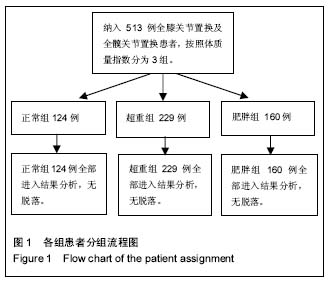
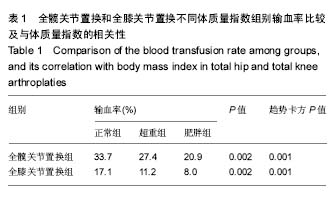
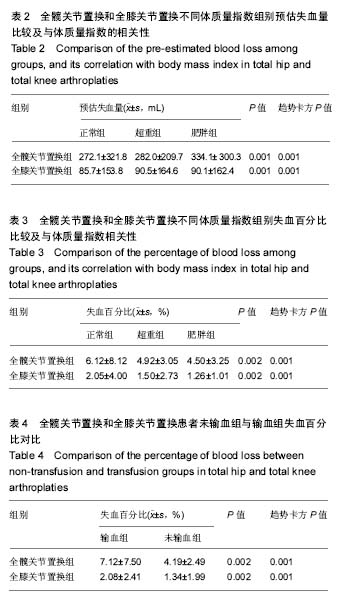
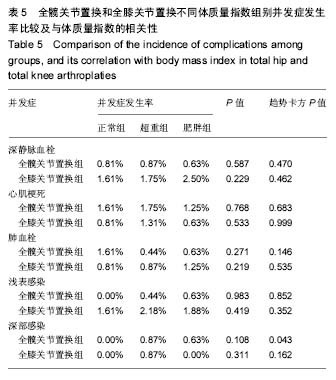
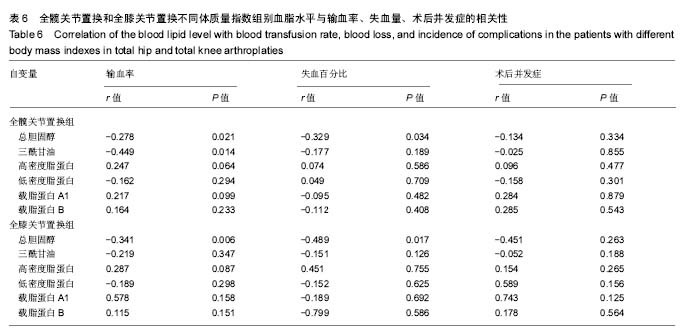
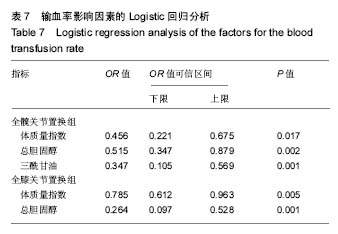
.jpg)